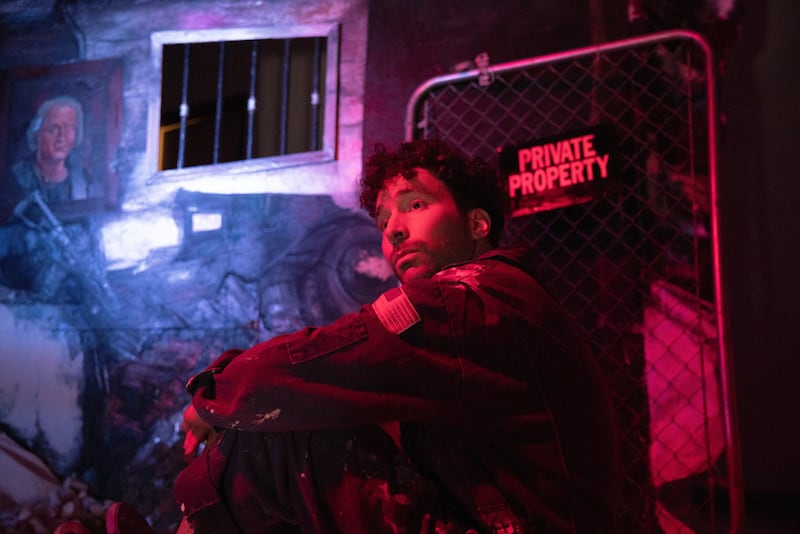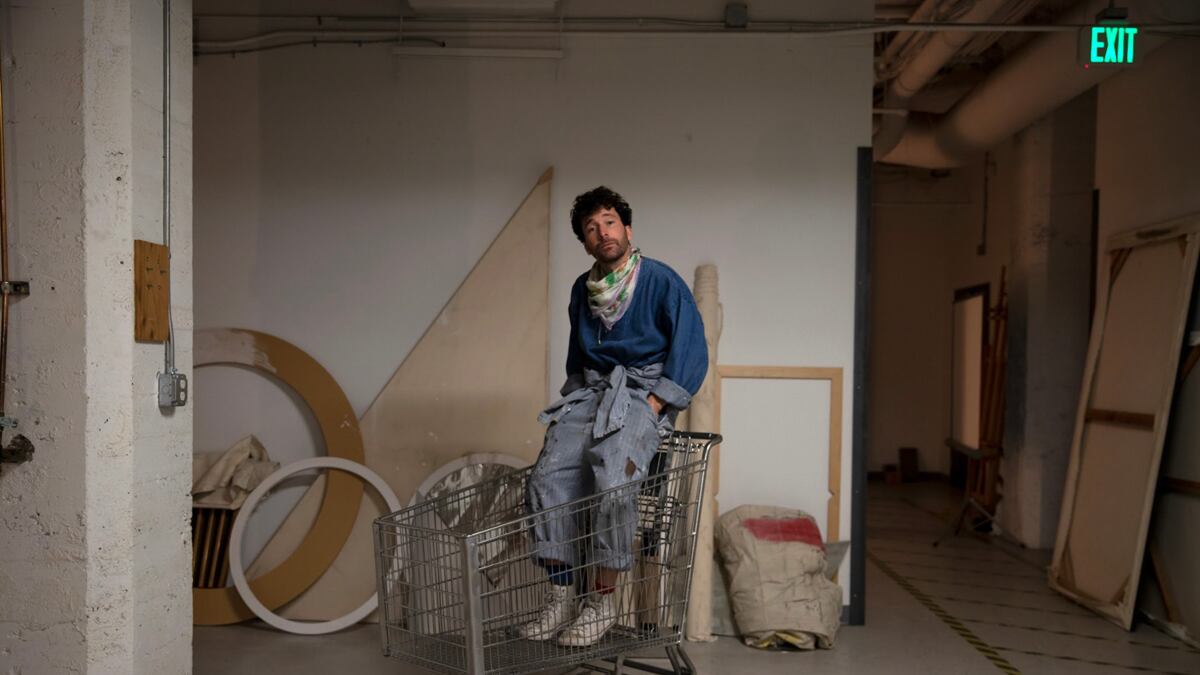There are no actors in Walking the World With This Fire, Samuel Eisen-Meyer’s art installation about American cruelty through the ages, but it is filled with people. You can feel their presence—people who lived, people who died, and people for whom life was a living death.
A multimedia extravaganza about capitalism, bigotry and beyond would be a tough sell at any time, let alone during the rise of the Omicron variant. Yet Walking the World, presented by CoHo Productions, is worth seeking out, not least of all because it offers audiences a relatively safe opportunity to engage with a compelling and confrontational work of art.
To experience Walking the World, you step through a shadowy entryway and onto an intimate stage, where you find yourself surrounded by oil paintings, videos and a soundscape that encircles you with bangs and whispers. Eisen-Meyer spent nearly two years creating the installation—and it shows.
While you can enter or exit Walking the World at any given moment—the videos and sound effects are played on a loop—it demands and rewards your patience and attention. I spent about 45 minutes wandering and observing, but left with the nagging feeling that there were dozens of details I had missed.
Eisen-Meyer’s creations are like riddles that grow more complex as you look closely. A silvery sculpture of a man’s head is striking, but pass it too quickly and you might miss the smartphone jutting out from beneath his chin, near where his heart should be. It’s a chilling reflection of America’s dependence on technology—and the dehumanizing rituals of mass production feeding that dependence on a daily basis.

While the sculpture is best seen up close, other elements of Walking the World require a broader perspective, including a painting of a burning American flag that looks as if it is transforming into a wolf. From a short distance away, the creature’s eye appears to be a hole in the flag, but stand back and you see a vision of how patriotism can prey on instincts that are animalistic in the worst sense of the word.
All of this might be obvious to some audiences, but knowing isn’t the same as understanding—or hearing, for that matter. If Eisen-Meyer has crafted a work that is less an exhibit than an experience, it is because of his ingenious use of sounds, like crashing waves and machinery and a mantra quietly repeated throughout: “There has to be another way.”
The correct response to that is, “A way out of what?” If the description of Walking the World on CoHo’s website—”a meditation on the psychology and deception of United States domestic imperialism”—sounds amorphous, it’s because Eisen-Meyer isn’t content to take on one systemic evil at a time. He prefers to battle them all simultaneously.
Walking the World doesn’t try to win that battle—it’s more interested in identifying enemies than solutions. It’s about what we’re up against, from the lingering legacy of slavery to the machinations of the Supreme Court, which are alluded to with an animation of nine hooded, gavel-wielding figures who resemble the Dementors from Harry Potter.
While audiences looking to Walking the World for ideas to cure the ills it depicts might feel unfulfilled, the craftsmanship behind the installation is inspiring. You may, for instance, despair at the implications of Eisen-Meyer’s decision to replace the Statue of Liberty’s torch with a menacing-looking gold chain, but you can still be heartened by the brilliance of his symbolism.
Like many works produced by Portland companies during the past two years, Walking the World straddles the divide between theater and visual art. It probably exists because of the pandemic, but it is not defined by it—and above all, it is a masterpiece that can be experienced without submitting to the terror of sitting in a crowd.
SEE IT: Walking the World With This Fire plays at CoHo Theatre, 2257 NW Raleigh St., 503-220-2646, cohoproductions.org. The gallery is open to the public 4-9 pm through Jan. 15. Free.
